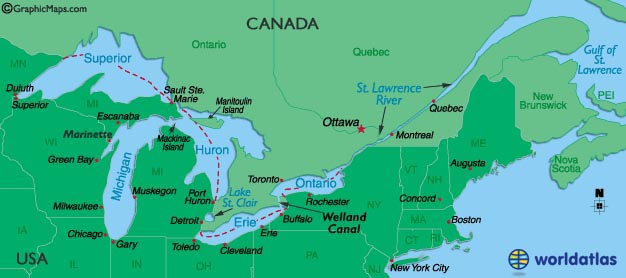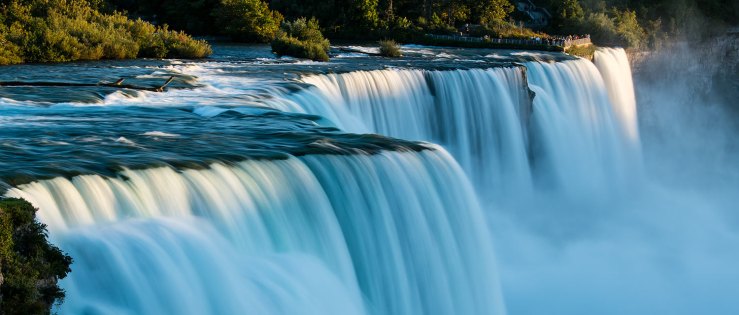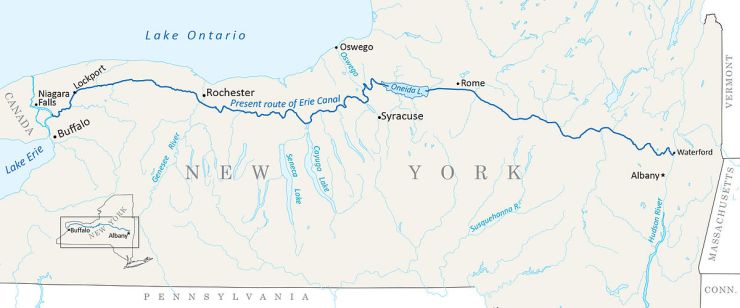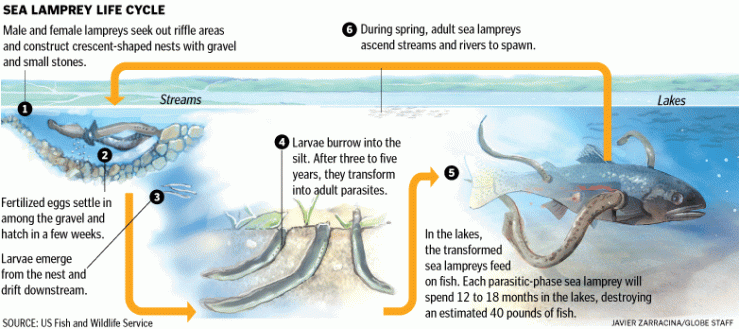 One thing stands out about the Demogorgon and its kin, their scary mouthpieces. For those familiar with the craze Netflix series Stranger Things and its sophomore season which arrived a couple of weeks ago, a Demogorgon’s face might look otherworldly, but those with a certain interest in zoology might be quick to tell its inspiration. Lampreys lay in a special section of the Animal Life Tree since they are considered (along with hagfish) the most primitive living fish, and given that, we might extend the distinction to “most primitive living vertebrate”. As they may certainly look at first like an eel, close inspection to its mouth part, a circular sucking cup with ready-to-scratch sets of teeth makes its difference from other fish and most other animals. Technically known as agnates, both lampreys and their relatives hagfish lack a mandible (hence the agnates), scales and paired fins. There have been around 41 species recognized today and most of them lead a complex life cycle with multiple life stages, including a free roaming one on which they feed parasitically on bigger fish’s body fluids and tissues. Their suction cup mouth allows them to remain attached to free-swimming fish and their sharp teeth graze the host’s skin to get ahold of its precious fluids.
One thing stands out about the Demogorgon and its kin, their scary mouthpieces. For those familiar with the craze Netflix series Stranger Things and its sophomore season which arrived a couple of weeks ago, a Demogorgon’s face might look otherworldly, but those with a certain interest in zoology might be quick to tell its inspiration. Lampreys lay in a special section of the Animal Life Tree since they are considered (along with hagfish) the most primitive living fish, and given that, we might extend the distinction to “most primitive living vertebrate”. As they may certainly look at first like an eel, close inspection to its mouth part, a circular sucking cup with ready-to-scratch sets of teeth makes its difference from other fish and most other animals. Technically known as agnates, both lampreys and their relatives hagfish lack a mandible (hence the agnates), scales and paired fins. There have been around 41 species recognized today and most of them lead a complex life cycle with multiple life stages, including a free roaming one on which they feed parasitically on bigger fish’s body fluids and tissues. Their suction cup mouth allows them to remain attached to free-swimming fish and their sharp teeth graze the host’s skin to get ahold of its precious fluids.
Although there’s plenty to talk both about Stranger Things and lampreys in general, I’ll try to focus on telling another story about biological invasions, one which further leads to the conclusions that we human beings are and have being really stupid as managers of nature and its resources. The story of the lamprey invasions in the Great Lakes of North America is pretty thoroughly explained on Dan Egan’s recent book The Life and Death of the Great Lakes, a truly amusing book I invite you to look for. Here, I’ll intend to summarize what I’ve learned from his book and a couple of other sources. If you’re American or Canadian, you’re probably familiar from the Great Lakes from school, but otherwise, if you, like me are reading this article from another region, it’s probably wise, to begin with some basics on these bodies of water.
Great Lakes 101
HOMES. Any American person who took a geography/social studies class at some point in their lives will tell you that this is the mnemonic used to recall all five names of The Great Lakes (Huron – Ontario – Michigan – Erie – Superior). Created from glacial retreats hundreds of thousands years ago, the Great Lakes remain up to this day on the border between Canada and the US in a Mideastern position in the North American continent. Estimated to contain up to 21% of the world’s supply of surface fresh water, the Great Lakes are an essential resource for two of the world’s most prosperous countries. On its shores lay significant metropolia like Chicago, Detroit, Green Bay, Milwaukee, Cleveland, and Toronto, which mainly connect to each other through the lakes’ surfaces. Although geographically significant, the history of the great lakes features some sad highlights which we’ll go over soon, but first, we lay down the map for better understanding.

Lake Superior is so called because it’s located at 174 meters above sea level, higher than its companions and a fact not easily discernible on a flat map. It is also the biggest lake both in volume and territorial extension. The lake then flows to the Michigan and Huron lakes, actually two opposing branches of one big lake. It is then connected to Lake Erie which in turn connects to Lake Ontario through the notable Niagara Falls, which at 99 m high, also happen to serve as a biological barrier which has separated the upper lakes from the bottom Ontario lake and thus, the sea. In a way, the Great Lakes actually are a river system. Naturally, even Lake Ontario at 75 masl used to be completely free from direct contact with the sea. In order to understand their current connection, we’ll have to look back into recent history.

The Mediterranean of the New World: A story of American vision and failure
The Mediterranean shares a similar geological history with the Great Lakes. Both were formed by the movement of ice caps in the last ice ages. As with the Great Lakes, at various points in its geologic history, the Mediterranean Sea has been cut off from contact with the Atlantic Ocean. Currently and since an estimated 5.3 million years ago, the Mediterranean once again is connected to the Ocean through the Strait of Gibraltar. Connecting various peninsulas in Europe, as well as the North of Africa, the Mediterranean has served its role as the setting for some of the greatest civilizations in ancient history (Egyptians, Greeks & Romans). Today it remains an important connection to different cities and ports and an important part of the European and North African economy, migration and tourist attraction. It’s hard then, to blame Americans in the XIX century for dreaming about the Great Lakes becoming the equivalent of the Mediterranean, a fourth coast for the US. Accomplishing that, however, was going to prove to be a feat against nature.
The idea of linking the Great Lakes to the sea is credited to a merchant by the name of Jesse Hawley, who during imprisonment for tax-related issues wrote several letters to a local newspaper, urging the construction of a connection between the lakes and the Hudson River. The way Hawley saw it, it was God’s intention for the canal to be made. Even at its time, the idea was derided as crazy, but it got the attention of the governor of New York, DeWitt Clinton. Clinton normally gets most of the credit for the construction of what would be the Erie Canal, since he pushed this project during his two non-consecutive terms in office. On October 1825, the Canal was inaugurated and Clinton was on a horse pulled barge at a pace of 4 mph. The Erie Canal, however, would only connect the lakeshore city of Buffalo with Albany, close to New York City and the East Coast. Not as essential today, the Canal proved to be an efficient way of transporting goods to the middle of the country (Suez Canal and Panama Canal were still decades ahead of being built).

As the US had their Erie Canal to brag about, Canada couldn’t be caught behind and decided to build what would become the Welland Canal, connecting Lake Ontario to Lake Erie and bypassing thus the Niagara Falls. The Welland Canal, however, was a much more ambitious project, since, through a series of expansions reaching the mid-XX Century, it was trying to use the St. Lawrence River as a connection to the sea. By the 1950s, when what would become known as the Great Lakes Waterway was about to open to the biggest freighters of its time, both the Suez and Panama canals had served as precursors of how much these type of engineering feats could benefit an entire region.

However, for such a visionary endeavor, the project’s main sin was its lack of vision. Even though suitable at the time, the size of the canal’s locks quickly became too small for an ever-expanding troupe of freight-carrying boats. As the 20th Century moved on, the system of transportation of goods through container ships and trucks connecting well-established road systems, impervious to the freezing in the winter months, was quick to settle in the American economy. Waterways connecting what had become ever shorter distances were proving to be hardly necessary, and the Great Lakes Seaway soon became unreliable, inefficient and almost obsolete.
Marine biota, however, hardly requires locks the size of modern-day freighters in order to cause ecological mayhem, and as we’ll see in the final section of this article, that is just what the Great Lakes were in for.
The Upsidedown gets open for the invasion
I must apologize for taking this long to finally get to talk about the real focus of this story. However, I felt all the history and geographical background was necessary for those unfamiliar with the region. Now that the Great Lakes have been open to the sea, though sadly their effect in the region is nowhere near as significant as it was expected to be, marine biota can finally make it through to places which had been physically impossible to cross for thousands of years. Writing to then president Eisenhower, an eighth-grader by the name of Pat Kenney wrote to President about his concern that an ecological disaster might be due in the Great Lakes given the breaching of the natural barriers. “The water runs eastward from the Great Lakes area into the mouth of the St. Lawrence River” answered one of Eisenhower’s advisors, with a hint of irony which in my mind makes his voice sounds like Troy McClure, “There is no prospect of the salt-water contaminating the freshwaters of the Great Lakes in any way whatsoever”.
Teenagers being more intelligent and aware than government officials? That’s probably still happening at this time. The official was right in that water wouldn’t change direction, however, big boats need to carry ballast water in order to balance their ships. This water is loaded when the ship lacks merchandise and discarded once it gets to its cargo loading destination. The amount of ballast water in a single ship can easily be over 5 million gallons which don’t have any kind of filtering, plus the early stages of most lifeforms are pretty much microscopic.
Lake trout with and without lamprey parasitism
The most important idea to grasp about the Great Lakes is that it represented a closed ecosystem for hundreds of thousands of years. This means that the food chain was pretty much evolving at a very slow pace with little to none outside interference. Lake dwelling species had adapted to such an environment and were pretty much unprepared for any sudden change. This is what biologists call an “ecologically naïve system”. The lake trout, for example, represented the top of the aquatic food chain, being able to feed on most things, including fish. The periods of less active in winter, the trout had evolved to lower its metabolism and maintain its energy. This, in turn, meant that the trout would be less likely to escape any kind of trouble in this state, but that was a pretty unlikely scenario.
It’s hard to pin the depletion of the lake’s trout stock only on the invasive lamprey since human overexploitation played a significant part in it. Trout was exploited for decades during the 19th and early 20th Century without an apparent consequence but the fishery collapsed around the 1940s. Lamprey in the upper Great Lakes was first reported Lake Michigan in 1936, a year later in Lake Huron and by 1938 it had reached the uppermost lake. Although there’s still discussion on whether Lake Ontario has always had a resident sea lamprey population, one that had evolved to adapt itself to a completely freshwater system, other researchers believe this lamprey entered the lake after the opening of the Erie Canal. One thing is for certain though, the sea lamprey didn’t get into Lake Erie, until the Welland Canal’s third expansion in the 1880s, with the first reported lamprey above the Niagara Falls been spotted there in Lake Erie on 1921. Apart from ballast water, lampreys are also known to attach to boat hulls, making this another possible entry point for these fish.
Original from the East Coast, we must dig deeper into lamprey ecology to understand its role the fishery collapse of not only trout but other commercial species as well. Lampreys are anadromous, meaning that it’s life cycle normally comprises of a riverine phase, a migration to the sea, and a return of adults to rivers only to mate and die (similar to the more commonly known salmon). However, with the Great Lakes being so big in size, the ocean phase of their cycle can easily be carried on Great Lakes’ waters; the riverine phase occurs on the numerous river branches connected to the lakes. During their first years, newly born lampreys (known in this stage as ammocoetes) dig into the sand and are pretty much filter feeders. They remain in that stage for 4-8 years and then metamorphize into the scary-looking adult. It’s during this phase when they normally seek the sea that lampreys change their feeding strategy to parasitic body-fluid-sucking. They remain at this stage for about two years before heading to freshwater for their fatal mating act. A single female lamprey can easily produce over 230,00 thousand eggs!

Being sucked on by a lamprey does not guarantee death for a fish. Since lampreys are parasites as opposing to predators, they need their host to be alive for as long as possible. However, weakening and infections can lead a host fish to its demise. Lamprey, in fact, comprise an important part of the East Coast’s ecological web, helping to flow nutrients from the sea to freshwater and vice-versa and also serve as food for bigger fish. In an ironic twist of fate, lampreys are actually considered endangered in some riverine systems. In the Great Lakes, however, they are free to feed on bigger fish without having to worry about being predated.
See them alive on this BBC clip from Ireland, but it behaves pretty much the same on the opposite side of the Atlantic
Even though the trout fishery collapsed decades ago, lampreys have been able to adapt to feeding on other Great Lakes fish. However, the almost complete eradication of apex predators on the lake detonated cascading negative effects. In order to talk about alewives, another article is needed, but suffice to say, these small herring fish are also Great Lakes invaders, and thriving on the new-found lake conditions, were quick to expand and at some point in the 60s were credited as composing 90 percent of the fish mass in Lake Michigan.

When everything is f*(@d up, call science!
I’m just not gonna let the chance escape of laying down the importance of science, how it could have prevented the Great Lakes ecological disaster in the first place and how it helped to mitigate the catastrophe already upon the lakes and its fishery guild. If science advisors had been present back in the 19th century or even the Eisenhower era, they would have warned against this project. Even if the locks had been created wide enough, the ecological disaster could have been even worse, and that would just mean more Chevrolets would be shipped from Detroit to the East Coast. As stupid as we see this whole scheme looking backward, the exact same thing is going on at the moment in Nicaragua, where a redundant second canal is being built across Central America connecting the Nicaragua countries two main bodies of freshwater Lake Managua and Lake Nicaragua.
 Back to Great Lakes, it feels appropriate to introduce Mr. Vernon Applegate, a name conspicuously lacking a Wikipedia page, although it still adorns the Great Lakes Fishery Commission prize on lamprey control research. Mr. Vernon is pretty much single-handedly responsible for much about we know about sea lamprey biology and much of the control methods carried on during the past half-century which have managed to regulate and keep in check lamprey numbers. His doctoral thesis for Michigan State University is titled The Natural History of the Sea Lamprey in Michigan, and at 334 pages, it’s pretty much the Bible on the invasion of the sea lamprey in the Great Lakes. It was written after three years of methodic research into physiology and statistical breakdowns of the lamprey’s life cycle. Applegate was not only trying to understand the lamprey for knowledge’s sake; he was actively searching for its weaknesses.
Back to Great Lakes, it feels appropriate to introduce Mr. Vernon Applegate, a name conspicuously lacking a Wikipedia page, although it still adorns the Great Lakes Fishery Commission prize on lamprey control research. Mr. Vernon is pretty much single-handedly responsible for much about we know about sea lamprey biology and much of the control methods carried on during the past half-century which have managed to regulate and keep in check lamprey numbers. His doctoral thesis for Michigan State University is titled The Natural History of the Sea Lamprey in Michigan, and at 334 pages, it’s pretty much the Bible on the invasion of the sea lamprey in the Great Lakes. It was written after three years of methodic research into physiology and statistical breakdowns of the lamprey’s life cycle. Applegate was not only trying to understand the lamprey for knowledge’s sake; he was actively searching for its weaknesses.
Later appointed in charge of the Institute for Fisheries Research, Vernon urge to attack the lamprey while it resides on the lakes’ streams, both as a youngling as well as during the breeding final migration. A system of weirs, mesh barriers preventing upstream flow became the first line of defense. Electrical barriers were also trialed but proved too costly and unreliable. Applegate had one final ace under his sleeve, the development of a lampricide, a poison acting exclusively on the invading fish. Sponsored by the US Fish and Wildlife Service, Applegate conducted lab research where hundreds of poisonous formulas were tested on aquariums containing both lamprey and native fish until finally hitting upon the mix still in use today. With these methods, lamprey population would be pushed back to 10% of its peak population where it remains to this day at the cost of $20 million each year.
An alternative chemical method uses a stress hormone to cause this fleeing effect in lamprey.
And thus I arrive at the end of this long story. I hope you’ve stayed along for the ride and hopefully learned something about geography, history or invasive species biology (the latter being the focus of this blog). Sadly, in this instance, as with most we’ll be dealing with here, science was the answer but it came too late in the game to save the Great Lakes from becoming an ecological graveyard. I’ve learned that commercial species like whitefish and introduced salmon and trout varieties still exist in the Great Lakes, however, their current state is likely just a farce of what it once was, a sea separate from all over major bodies of water for geological periods of time.
References
Applegate VC. 1951. The Sea Lamprey in the Great Lakes. The Scientific Monthly.
Egan D. 2017. The Life and Death of the Great Lakes. WW Norton & Company.
Hickmann CP, Roberts LS, Larson A, I’Anson H, Eisenhour DJ. 2006. Principios Integrales de Zoología. McGraw Hill
Kircheis FW. 2004. Sea Lamprey Petromyzon marinus Linnaeus 1758. US Fish and Wildlife Service
Lawrie AH 1969. The Sea Lamprey in the Great Lakes. 99th Annual Meeting of the American Fisheries Society.

